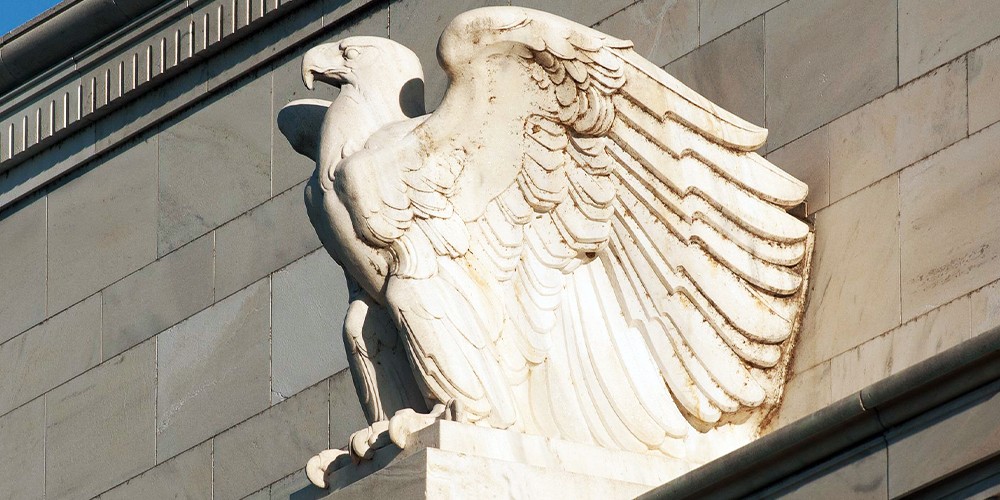Major economies blighted by the 2008 financial crisis have more than recuperated their GDP. But households, corporates and governments are all leaning more towards balance-sheet repair than releveraging and spending. This means central banks are not getting the inflation they crave and reverting to failed, unconventional monetary policy tools.
Ultra-low rates distort saving, investment and employment decisions. The boost to asset prices created by quantitative easing has proved counterproductive, widening disparities, hindering demand and stymying inflation. 2020 will offer more of the same, as well as a potential surge in geopolitical risks that, so far, have not disrupted most stock markets.
The threat to elevated markets comes not from central bank policy, but from protectionism and distrust. Should ‘stagflationary’ forces build, the cost-led inflationary flame will snuff itself out. Helpfully, ultra-cheap borrowing costs offer incentives to governments to open the fiscal box. All this has precedent in Japan.
Hermes Investment Management’s economic projections are predicated on creeping protectionism and growth ebbing away over 2020-21. The result will be more profligate governments and a reversal of what little monetary ‘normalisation’ there has been. At the same time, risk assets will continue to underperform.
Amid these conflicting forces, Hermes’ macroeconomic outlook is based on five core beliefs.
First, political distrust and beggar-thy-neighbour policies will continue to build. In the coming presidential election year, US Democrats may oppose a general approach to trade akin to the Smoot-Hawley reforms of 1929-30. These imposed tariffs of up to 20% on more than 20,000 US imported goods, covering as much as 60% of dutiable imports. However, President Donald Trump could invoke the ‘Super 301’ trade rule to impose tariffs without approval on countries deemed to be engaging in ‘unfair’ trade practices. The coverage, thus far, looks somewhere under one-fifth of dutiable imports.
Retaliation could include a more aggressive devaluation of the renminbi by China than the 3% fall portended by forwards contracts for three years’ time. Questions would be raised about China’s commitment to US treasuries, potentially raising US mortgage rates (priced off long yields). This, and devaluations elsewhere, could generate a deflationary return to the US.
Second, markets may initially experience the opposite growth/inflation mix. Inflation may reappear. But it will, as happened in 2011 with oil, be the ‘wrong sort’: cost-push led by tariffs, goods and labour shortages, rather than demand-pull. Central banks will have to pretend not to notice as economies stagflate. With this cost inflation proving temporary, a shift in mindset as deflationary forces re-emerge may be necessary.
This is especially probable if wage growth fails to keep pace. Some green shoots are showing, notably in the US, UK and Germany, but may be trampled underfoot unless corporate pricing-power builds. Recent improvements have reflected cost increases, such as Japan’s tax hikes, and sterling’s depreciation, more than demand.
Third, the road to ‘normal’ remains closed. Central banks fear that ‘quantitative tightening’ would have contributed to an asset-price deflation that scuttles growth. This risk is most acute in the long-rate sensitive US and euro area. The Federal Reserve has halted QT after just two years, and is rebuilding its balance sheet. By factoring in QE, the true US funds rate looks closer to minus 2%, and is unlikely to come close to its pre-2008 levels. With the UK’s exit from the European Union, the Bank of England may not reach even the 1.5% bank rate it wants before QT.
Fourth, governments will increasingly offer fiscal solutions to appease voters. Trump may reflate again to reattract centrist voters. In Tokyo, President Shinzō Abe is taking Japan into its third decade of loosening. The UK is ditching its deficit ceiling.
The European Central Bank can consider positive (nominal) rates only if growing political tensions don’t unravel the economic union that monetary union needs. The good news is a sub 1%-of-GDP deficit and negative yields make it easier for Germany to tolerate a euro-area-wide fiscal expansion into that country’s 2021 election.
Finally, in emerging markets, the outlook in a more protectionist/stronger-dollar scenario may be less favourable. Vulnerability lies with non-commodity exporters with high exposure to short-term dollar debt and foreign saving needs, such as Turkey and Argentina. But, for others, external debt ratios are lower, with fewer currency pegs to protect.
Political fragility, protectionism, cost inflation and dissipating growth suggest renewed volatility. The dilemma for central banks may thus be between using their limited ammunition or letting fiscal expansion do the work. In all likelihood, policy-makers will do a little of both, rather than opting for an inconclusive tug-of-war that threatens recession.
Neil Williams is Senior Economic Adviser to Hermes Investment Management.
The above is published solely for informational purposes and is not to be construed as a solicitation or an offer to buy or sell any securities or related financial instrument. The views and opinions contained herein are those of the author and may not necessarily represent views expressed or reflected in other Hermes communications, strategies or products.
